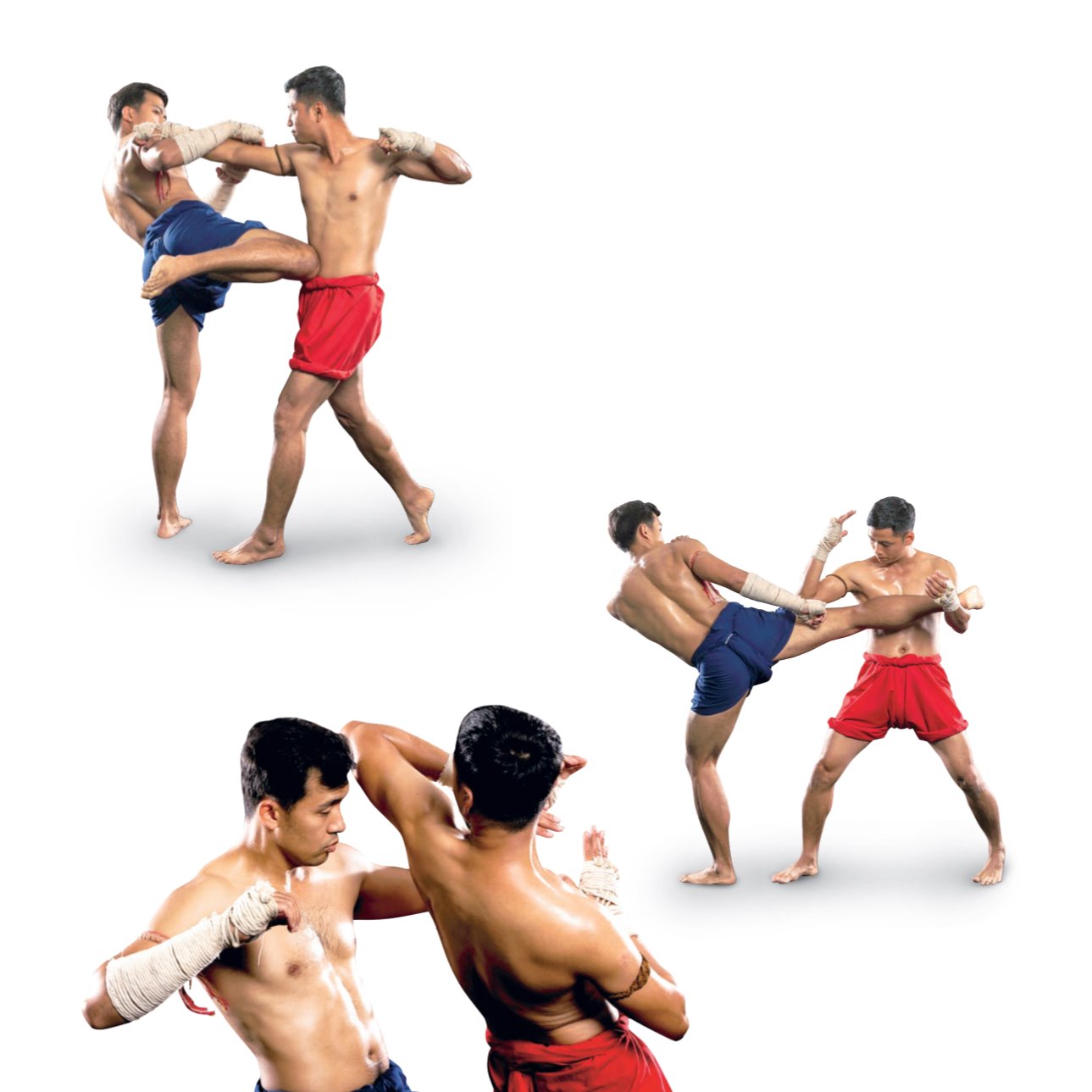

Folk Games and Sports
|
183
The details of Muay Thai are regarded as the science and art of fighting that
requires brilliant skills and the application of all tactics and techniques. Not only serving as
a self-defensive fighting, Muay Thai has also adopted Thai arts and culture. It is evident
in Mai Muay’s illustrative names which is easy to remember, by comparing the
characteristics of the fighting technique to the movement of the characters, events,
or mythical animals in literature, such as Erawan Soei Nga (Erawan thrusts tusks),
Hanuman Thawai Waen (Hanuman offers a ring), Mon Tho Nang Thaen (Montho
sits on a bench), and I-Nao Thaeng Krit (Prince Panji stabs with a dagger). Some of
the techniques are called after Thai lifestyles, such as Then Kwat Lan (senior monk
sweeps the temple ground), Khluen Krathop Fang (waves strike the shore), Nu Tai
Rao (mouse walks on the line), Mon Yan Lak (Mon kicks a stake), and Yuan Thot
Hae (Vietnamese casts a fishing net).
The feature of Muay Thai is that it does not focus on physical force, but more
on techniques and tactics of offensive and defensive moves. In the past, Muay Thai
was a bare-knuckle boxing or wrapping boxers’ hands with hemp rope, called
“Khat
Chueak”
. It, therefore, allowed boxers to clinch, pull, twist, or throw down the opponent.
Despite the same basic in each region, there are unique tactics and famous boxing
styles of each locality such as Muay Chaiya from Surat Thani province, Muay Korat
and Muay Lopburi.
• I-Nao Thaeng Krit”
(Prince Panji stabs with a dagger)
• Hiran Muan Phaendin”
(Demon Hiranyaksha
rolls the Earth)
• Hak Nguang Iyara”
(Broke the elephant’s trunk)


















